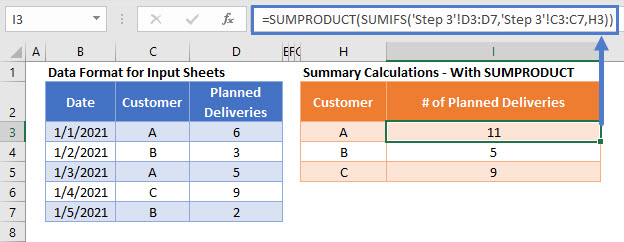Calculate Totals from Multiple Excel Sheets Easily

When dealing with large datasets, Excel becomes an essential tool for organizing, analyzing, and summarizing information. One common task is calculating totals across multiple sheets within a single workbook or from different workbooks. This article will guide you through the process of calculating totals from multiple Excel sheets, making your data management more efficient.
Understanding the Basics

Before we dive into the step-by-step guide, let’s understand why you might need to aggregate data from various sheets:
- Consolidation - Bringing together financial data from different departments or projects.
- Reporting - Creating summaries for management or stakeholders where each sheet represents a different metric or period.
- Analysis - Comparing or analyzing data sets from different sources for trends or anomalies.
To successfully calculate totals from multiple sheets, you need to know how to navigate Excel's formula and linking capabilities. Here's how you can start:
Setting Up Your Sheets

First, ensure your sheets are formatted in a way that allows for easy data aggregation:
- Each sheet should have similar structures where data can be referenced uniformly.
- Use consistent column headers across sheets to simplify referencing.
- Name sheets logically to make referencing easier (e.g., ‘Jan_2023’, ‘Feb_2023’).
Step-by-Step Guide to Calculate Totals

Here’s a detailed walkthrough on how to calculate totals from multiple sheets:
1. Creating a Summary Sheet

Designate a new sheet as your summary or consolidation sheet. This will be where you’ll gather all your totals:
- Add column headers or row labels to represent the data categories you’ll sum from other sheets.
2. Using the SUM Function Across Sheets

Excel provides a SUM function that can aggregate data from multiple sheets. Here’s how to use it:
- Enter the SUM function in your summary sheet:
=SUM(Sheet1:Sheet5!A1)
Replace 'Sheet1:Sheet5' with the actual range of your sheets, and 'A1' with the cell you want to sum from each sheet. This function will sum the contents of cell A1 from Sheet1 through to Sheet5.
3. Using 3D References for Ranges

If you need to sum a range across several sheets, 3D references come in handy:
=SUM(Sheet1:Sheet5!A1:A10)
This will sum all cells from A1 to A10 in each sheet from Sheet1 through Sheet5.
4. Summing Non-Adjacent Sheets

Excel also allows you to sum from non-adjacent sheets using curly braces:
=SUM({Sheet1:Sheet2!A1,Sheet4:Sheet5!A1})
Here, you can add or exclude specific sheets within the formula.
5. Using Named Ranges

To simplify complex formulas, use named ranges:
- Define a name for your range in Excel. For instance, call the range of data you wish to sum ‘MonthlySales’.
- Now, you can reference this named range in your SUM function:
=SUM(MonthlySales)
🔍 Note: Named ranges will make your formulas more readable, especially if you're dealing with large or frequently changing data sets.
6. Combining Data from Different Workbooks

To calculate totals from different Excel files, you can use the SUM function with external references:
=SUM('[Workbook1.xlsx]Sheet1:Sheet5'!A1)
Ensure all workbooks are open, or your formula will throw an error.
7. Advanced Techniques

For those dealing with a larger number of sheets or dynamic data:
- Consider using Excel’s Power Query to merge and consolidate data from multiple sources.
- Macros or VBA scripts can automate the summation process when dealing with a large number of sheets or frequently updated data.
📌 Note: Macros and VBA require some programming knowledge but offer great flexibility in data handling.
By following these steps and using Excel's robust functions, you can efficiently manage and analyze data from multiple sources. This not only saves time but also reduces errors and enhances reporting accuracy.
Keep in mind, as your data structure grows or changes, you might need to update your formulas to reflect the new layout or to incorporate new data sets. Excel's dynamic formulas and range naming capabilities can help make these updates less cumbersome.
What if I have blank cells in my range?

+
The SUM function will ignore blank cells, so they won’t affect your totals.
How do I make my SUM formula dynamic for adding new sheets?

+
You can use Excel’s Table feature or create a macro that updates your formula automatically when new sheets are added.
Can I sum only if a certain condition is met?

+
Yes, use the SUMIF or SUMIFS functions to sum based on specific criteria across sheets.



